Nuno Mendes
High-level robot programming based on CAD: dealing with unpredictable environments
Sep 09, 2013
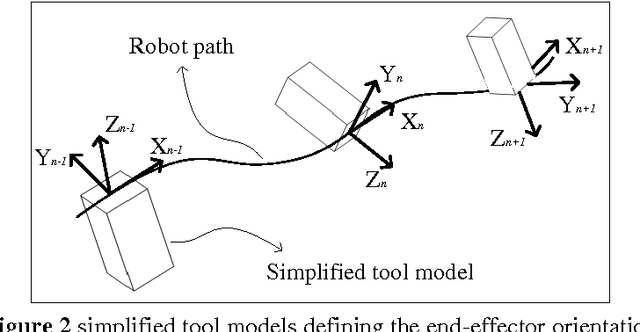
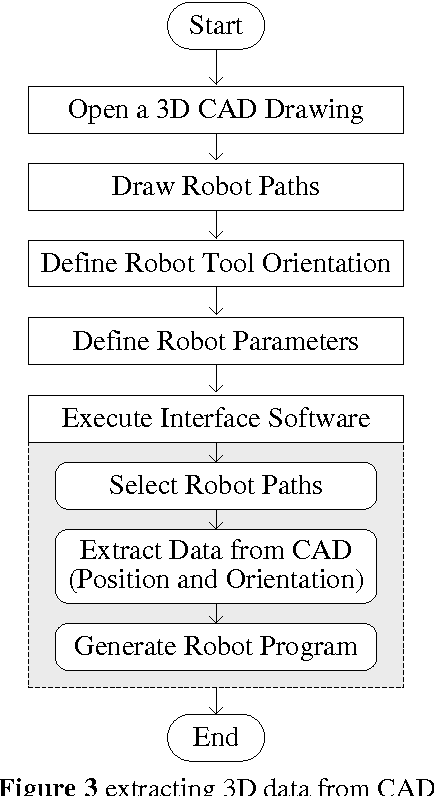
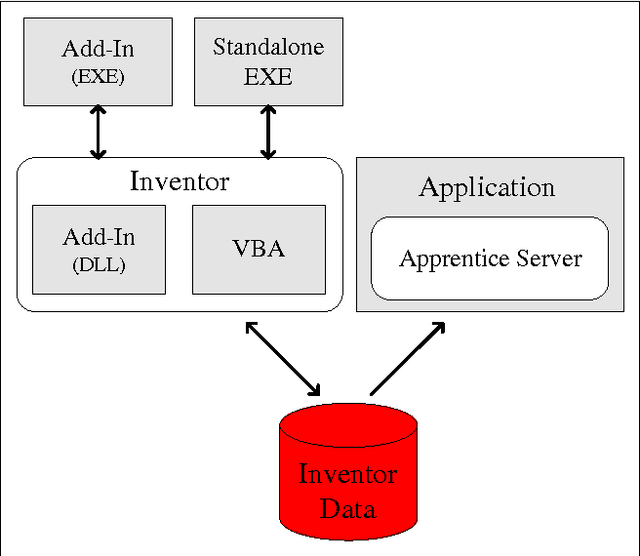
Abstract:Purpose - The purpose of this paper is to present a CAD-based human-robot interface that allows non-expert users to teach a robot in a manner similar to that used by human beings to teach each other. Design/methodology/approach - Intuitive robot programming is achieved by using CAD drawings to generate robot programs off-line. Sensory feedback allows minimization of the effects of uncertainty, providing information to adjust the robot paths during robot operation. Findings - It was found that it is possible to generate a robot program from a common CAD drawing and run it without any major concerns about calibration or CAD model accuracy. Research limitations/implications - A limitation of the proposed system has to do with the fact that it was designed to be used for particular technological applications. Practical implications - Since most manufacturing companies have CAD packages in their facilities today, CAD-based robot programming may be a good option to program robots without the need for skilled robot programmers. Originality/value - The paper proposes a new CAD-based robot programming system. Robot programs are directly generated from a CAD drawing running on a commonly available 3D CAD package (Autodesk Inventor) and not from a commercial, computer aided robotics (CAR) software, making it a simple CAD integrated solution. This is a low-cost and low-setup time system where no advanced robot programming skills are required to operate it. In summary, robot programs are generated with a high-level of abstraction from the robot language.
* Industrial Robot: An International Journal
Discretization and fitting of nominal data for autonomous robots
Sep 09, 2013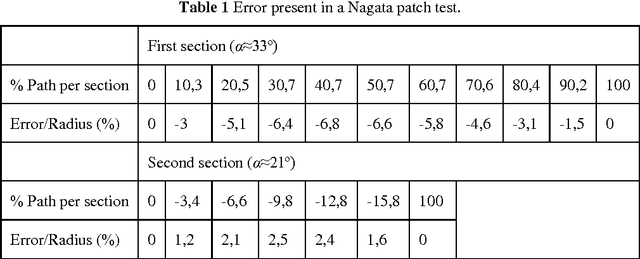
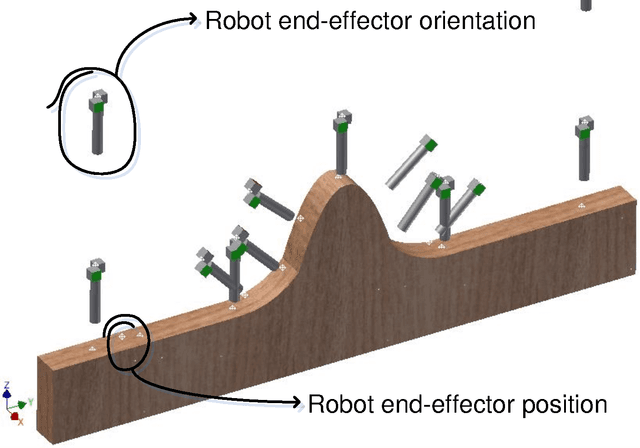


Abstract:This paper presents methodologies to discretize nominal robot paths extracted from 3-D CAD drawings. Behind robot path discretization is the ability to have a robot adjusting the traversed paths so that the contact between robot tool and work-piece is properly maintained. In addition, a hybrid force/motion control system based on Fuzzy-PI control is proposed to adjust robot paths with external sensory feedback. All these capabilities allow to facilitate the robot programming process and to increase the robots autonomy.
* Expert Systems with Applications
CAD-based robot programming: The role of Fuzzy-PI force control in unstructured environments
Sep 09, 2013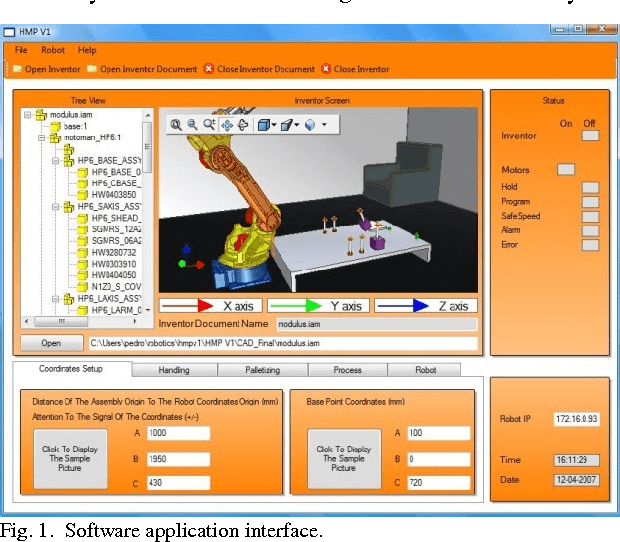
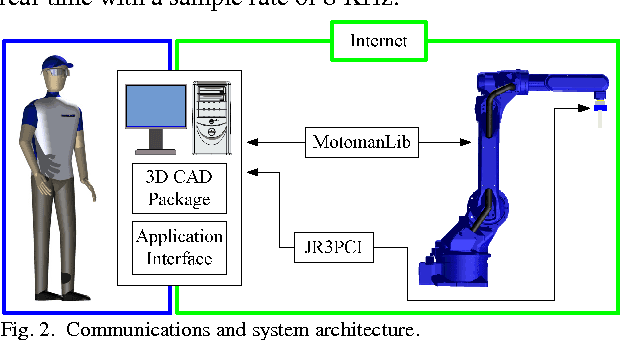
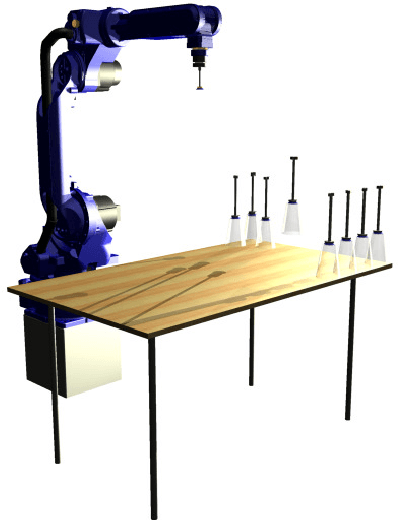
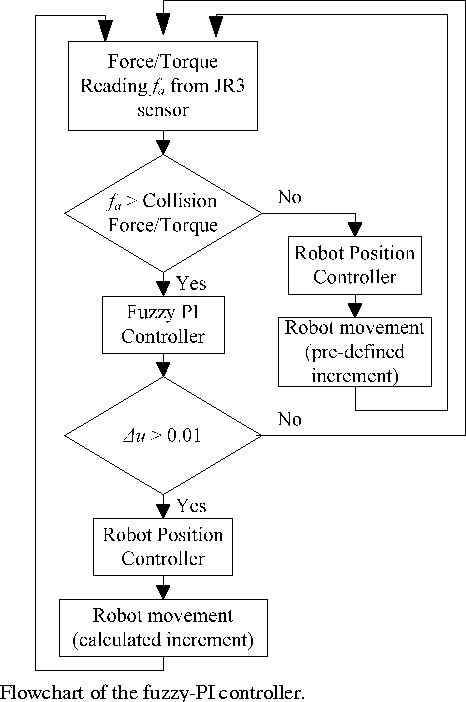
Abstract:More and more, new ways of interaction between humans and robots are desired, something that allow us to program a robot in an intuitive way, quickly and with a high-level of abstraction from the robot language. In this paper is presented a CAD-based system that allows users with basic skills in CAD and without skills in robot programming to generate robot programs from a CAD model of a robotic cell. When the CAD model reproduces exactly the real scenario, the system presents a satisfactory performance. On the contrary, when the CAD model does not reproduce exactly the real scenario or the calibration process is poorly done, we are dealing with uncertain (unstructured environment). In order to minimize or eliminate the previously mentioned problems, it was introduced sensory feedback (force and torque sensing) in the robotic framework. By controlling the end-effector pose and specifying its relationship to the interaction/contact forces, robot programmers can ensure that the robot maneuvers in an unstructured environment, damping possible impacts and also increasing the tolerance to positioning errors from the calibration process. Fuzzy-PI reasoning was used as a force control technique. The effectiveness of the proposed approach was evaluated in a series of experiments.
Direct off-line robot programming via a common CAD package
Sep 09, 2013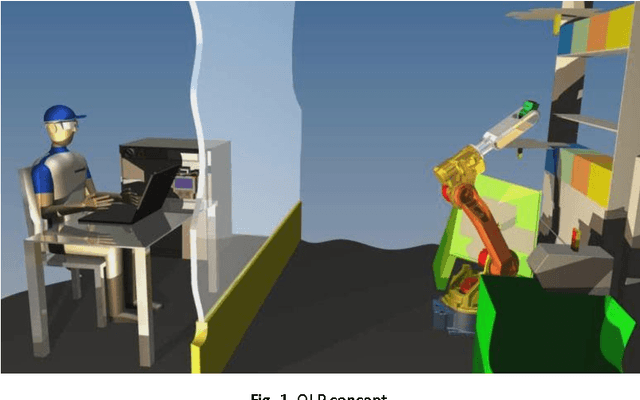
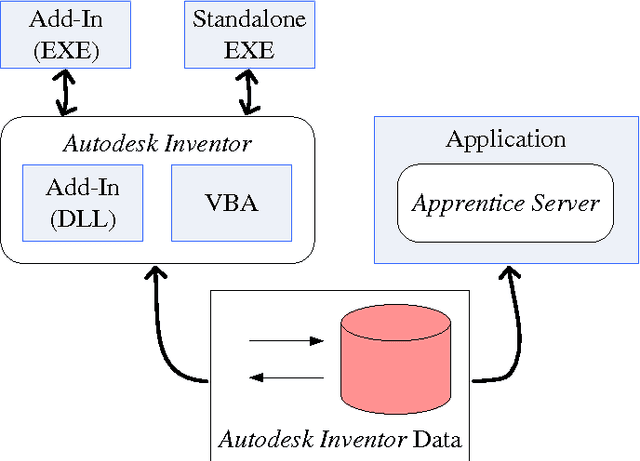
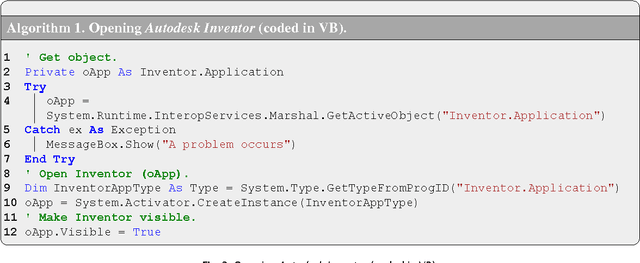
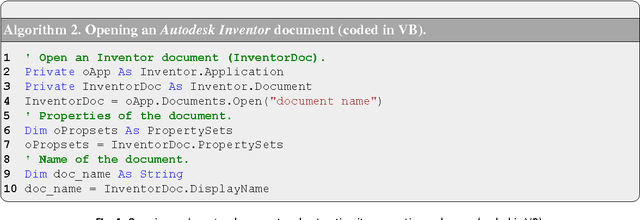
Abstract:This paper focuses on intuitive and direct off-line robot programming from a CAD drawing running on a common 3-D CAD package. It explores the most suitable way to represent robot motion in a CAD drawing, how to automatically extract such motion data from the drawing, make the mapping of data from the virtual (CAD model) to the real environment and the process of automatic generation of robot paths/programs. In summary, this study aims to present a novel CAD-based robot programming system accessible to anyone with basic knowledge of CAD and robotics. Experiments on different manipulation tasks show the effectiveness and versatility of the proposed approach.
An optimal fuzzy-PI force/motion controller to increase industrial robot autonomy
Sep 09, 2013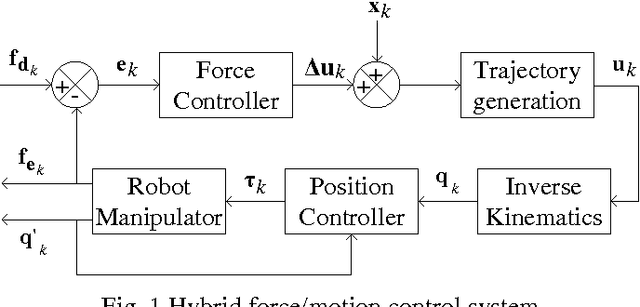
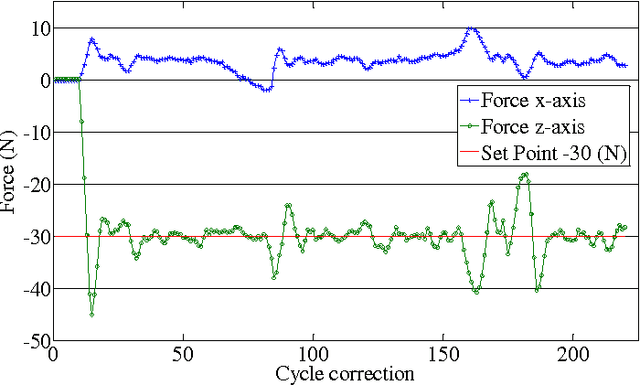
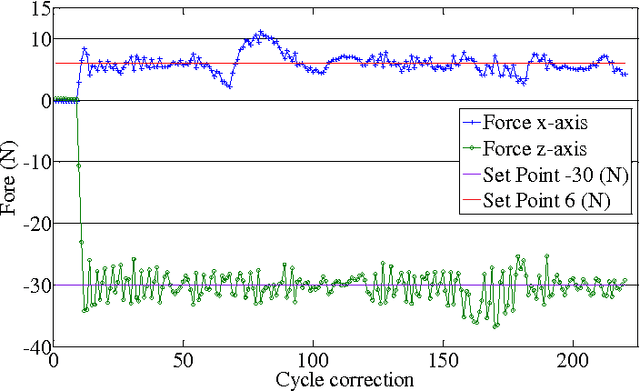
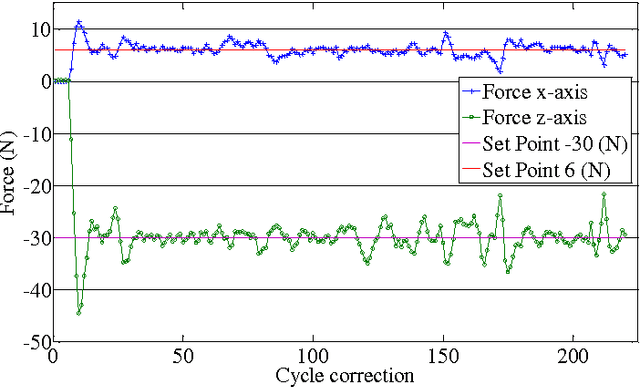
Abstract:This paper presents a method for robot self-recognition and self-adaptation through the analysis of the contact between the robot end effector and its surrounding environment. Often, in off-line robot programming, the idealized robotic environment (the virtual one) does not reflect accurately the real one. In this situation, we are in the presence of a partially unknown environment (PUE). Thus, robotic systems must have some degree of autonomy to overcome this situation, especially when contact exists. The proposed force/motion control system has an external control loop based on forces and torques exerted on the robot end effector and an internal control loop based on robot motion. The external control loop is tested with an optimal proportional integrative (PI) and a fuzzy-PI controller. The system performance is validated with real-world experiments involving contact in PUEs.
 Add to Chrome
Add to Chrome Add to Firefox
Add to Firefox Add to Edge
Add to Edge